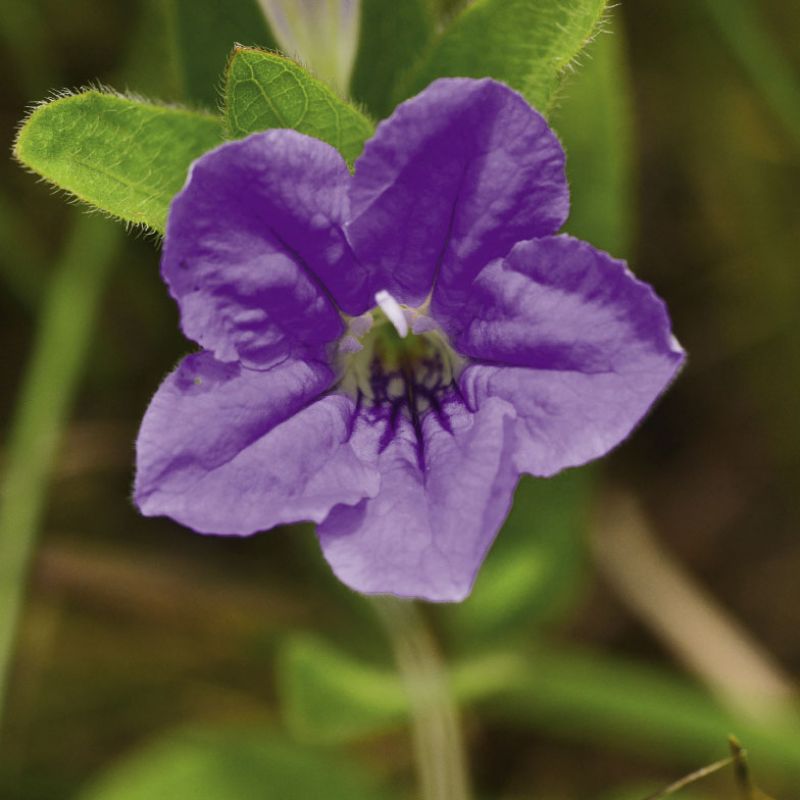
This fall, lay the groundwork for vibrant seasons to come with low-maintenance native perennials. While you can expect more foliage than blooms during the first growing season, your patience will be rewarded each subsequent year as warm weather sparks an abundance of lush color. Watch as hummingbirds and butterflies flock to the purple petals of wild petunia (Ruellia humilis) and the delicate white flowers of coralbells ‘Citronelle’ (Heuchera ‘Citronelle’) that rise in spires above chartreuse foliage. Inhale the minty aroma of bee balm (Monarda didyma) as its deep red blossoms lure visitors to a late- summer garden rife with color.
Wild Petunia (Ruellia humilis)
Thick, deep-green, hairy foliage forms a dense spreading mound that comes alive each spring with clusters of violet flower trumpets, blooming continuously from May until September. (The blossoms’ resemblance to those of the petunia give the plant its name.) Standing about a foot in height, this drought-tolerant native makes an excellent addition to a bed with other short plants or accent to taller perennials.
Sun: Partial shade
Water: One inch per week
Soil: Sandy loam
Size: 1 foot tall by 2 feet wide
Maintenance: Mulch with shredded leaves. Apply 18-6-12 fertilizer.
Bee Balm (Monarda didyma)
A member of the mint family, bee balm delivers rounded, scarlet-red, tubular blooms resembling unkempt mopheads. Typically occurring in bottomlands, thickets, damp woods, and along stream banks, it thrives in moist conditions. With sturdy stems reaching up to four feet tall, this powerhouse grower is great for adding height in a bed or using in a border. Noted for its herbaceous scent, the toothed foliage is used in both teas and salads.
Sun: Partial shade
Water: One inch per week
Soil: Sandy loam
Size: 2 to 4 feet tall
Maintenance: Will spread by rhizome; divide every three years.
Coralbells ’CIitronelle’ (Heuchera ‘Citronelle’)
The vibrant, citron-yellow foliage of coralbells ‘Citronelle’ brightens shady areas of the garden. A hybrid of our native Heuchera villosa, this clump-forming, compact species has been bred to perform in our hot, humid climate. While known primarily for its intensely colored leaves with silver undersides, coralbells ‘Citronelle’ produces tiny, cream-colored flowers that emerge in late summer on slender stems above the foliage mound. Use it as a border to highlight a garden walkway, or group several in a mass planting to create stunning contrast on a larger scale.
Sun: Partial shade
Water: One inch per week
Soil: Sandy loam
Size: 14 by 14 inches; compact
Maintenance: Mulch with shredded leaves. Apply 12-6-6 fertilizer.